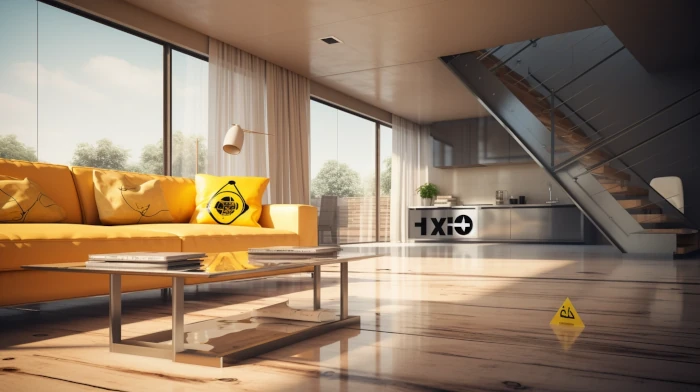We all know that outdoor air pollution, such as smog, is bad for our health. But did you know that one of the primary pollutants causing smog, ozone, can also lead to serious breathing problems indoors? Research indicates that when ozone from outdoor air enters buildings, it reacts with chemicals in our furniture and flooring to produce toxins that may enter our lungs.
In this article, we will discuss how ozone from outdoor air can poison our indoor air, the potential health risks associated with indoor air pollution, and how you can protect yourself and your family from this hidden danger.
The Dangers of Outdoor Ozone
Ozone is a gas found in the Earth’s atmosphere, and it plays an essential role in shielding us from harmful ultraviolet (UV) radiation. However, at the ground level, ozone is a dangerous air pollutant. High levels of ozone can irritate our respiratory system, cause shortness of breath, coughing, and chest pain, and even aggravate asthma and other lung diseases.
One of the reasons outdoor ozone is so hazardous is that it’s highly reactive – it interacts readily with other chemicals. And when outdoor ozone finds its way indoors, this reactivity can lead to the formation of toxic by-products in the air we breathe.
How Ozone Poison Indoor Air
When ozone from outdoor air enters buildings, it doesn’t stay in its original form for long. Instead, it reacts with chemicals called “volatile organic compounds” (VOCs) that are present in many household items, such as furniture, carpets, paints, and cleaning products.
Through these chemical reactions, new airborne substances form, many of which have unknown toxicity levels. Researchers suspect these substances can cause substantial problems, especially since some of them resemble diacetyl – a chemical known to cause lung damage in factory workers. Furthermore, in large concentrations, these chemicals can irritate your skin.
The Health Risks of Indoor Air Pollution
Indoor air pollution is a growing concern, as we spend more and more time indoors, and buildings become increasingly sealed to improve energy efficiency. In fact, the EPA estimates that indoor air can be two to five times more polluted than outdoor air, and in some cases, up to 100 times more polluted.
Exposure to indoor air pollution can lead to a wide range of health problems, from mild symptoms like headaches, dizziness, and fatigue, to more severe issues like respiratory infections, asthma attacks, and lung diseases. Long-term exposure can also increase the risk of developing chronic conditions such as heart disease and cancer.
Protecting Yourself and Your Family from Indoor Ozone
Given the potential health risks associated with indoor air pollution, it’s essential to take steps to minimize your exposure to ozone and other harmful chemicals. Here are some practical tips to help you and your family breathe easier:
- Improve Ventilation: Proper ventilation can help dilute indoor air pollutants and improve indoor air quality. Make sure your home has adequate airflow by opening windows and doors when possible, using exhaust fans in kitchens and bathrooms, and ensuring your home’s ventilation system is well-maintained.
- Choose Low-VOC Products: When purchasing household items, look for products labeled “low-VOC” or “no-VOC” to minimize the chemicals that can react with ozone. This includes furniture, carpets, paints, adhesives, and cleaning products.
- Reduce Ozone Sources: Some household appliances, such as air purifiers and laser printers, can generate ozone. Limit their use or choose models with lower ozone emissions.
-
Keep Indoor Plants: Some plants can help absorb VOCs and other pollutants, effectively improving indoor air quality. Select plants like Boston ferns, spider plants, English ivy, and aloe vera for your home.
-
Consider Air Filters: Some experts recommend using air filters designed to keep ozone out, especially in urban areas with elevated outdoor ozone levels. HEPA filters, for example, can help remove both particulate matter and gaseous pollutants from the air.
-
Regular Cleaning: Regular cleaning can help keep dust, allergens, and pollutants at bay. Use a vacuum cleaner with a HEPA filter, and don’t forget to dust surfaces and change your HVAC filters regularly.
Conclusion
We often think of air pollution as an outdoor problem, but the reality is that indoor air quality can be just as, if not more, dangerous to our health. By understanding the risks associated with ozone pollution and taking steps to protect ourselves and our families, we can breathe easier and live healthier lives.



